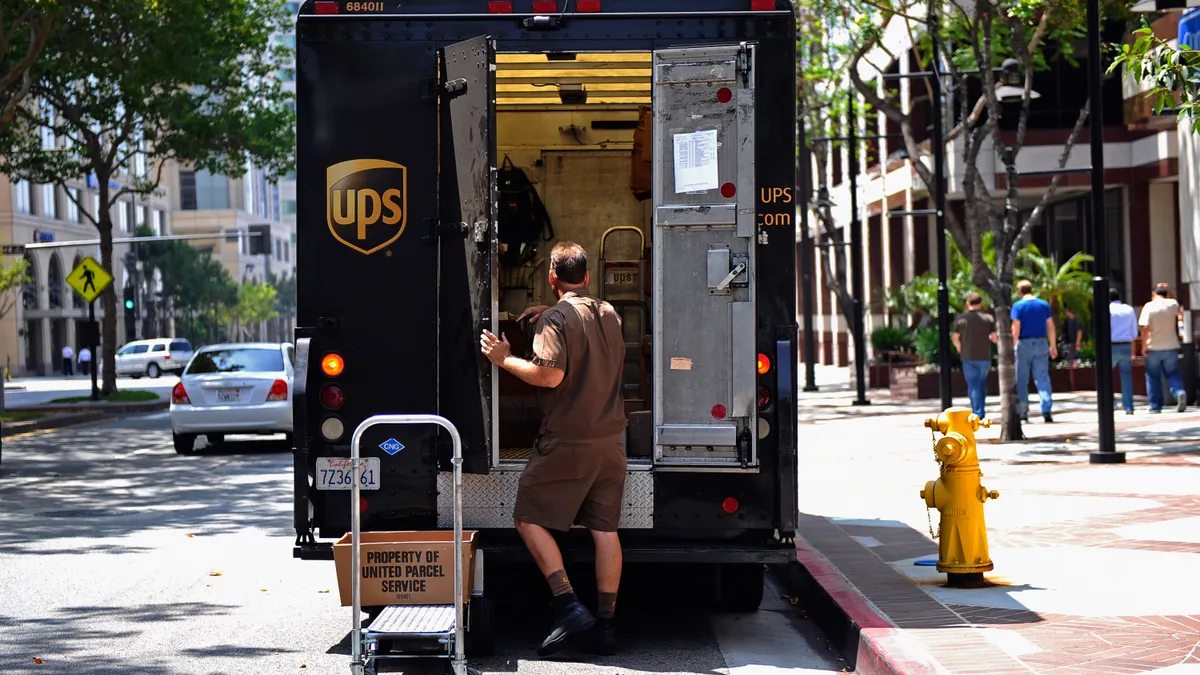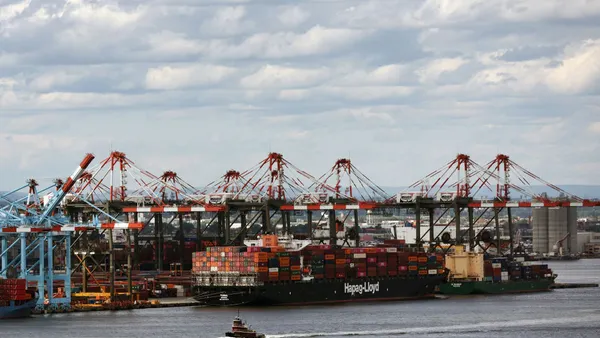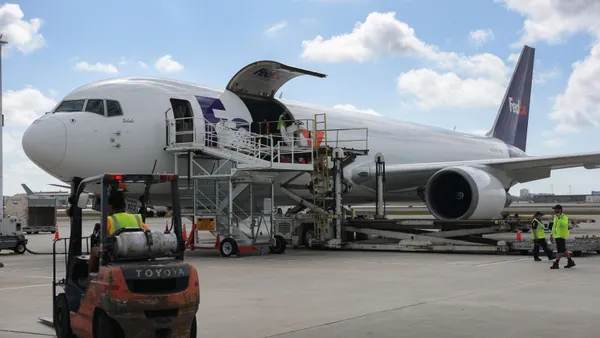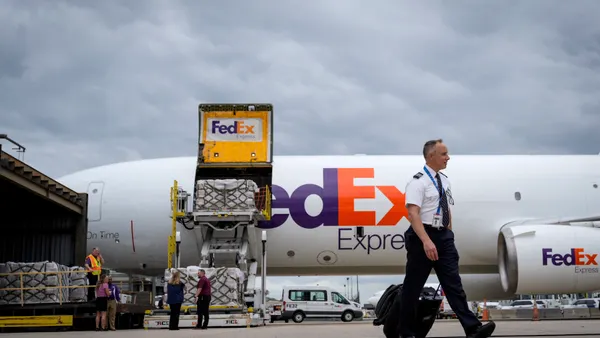Editor’s note: This story is part of a series highlighting takeaways from a July 23 event hosted by Supply Chain Dive, Trucking Dive, Manufacturing Dive and Packaging Dive. Register here to watch the replay on demand.
The elimination of the de minimis exemption could drive containerized imports and increase intermodal cross-border growth, Brian Kobza, chief commercial officer at IMC Logistics, said during Supply Chain Dive’s July 23 event, “Supply Chain Outlook: Trends and Risks to Watch in 2025.”
“If this de minimis rule is reducing the parcel usage, it should increase container usage,” said Kobza.
In turn, IMC Logistics has been investing heavily in its cross-border operations in California and Texas due to increased demand and a growing interest from customers, per Kobza.
However, further safety and security efforts and clarification are needed, as border crossing — whether by rail or truck — is subject to higher liability risk, the chief commercial officer said. These additional factors are pushing IMC and other trucking and intermodal companies to increase their investments ahead of the planned elimination of the de minimis exemption in 2027.
The exemption, which enables sub-$800 goods to enter the U.S. tax and duty free, has already been removed for imports from China and Hong Kong by the Trump administration. Commercial use of the trade rule will be completely repealed by July 1, 2027, as part of Trump’s “One Big Beautiful Bill Act.”
A further change to the rule was recently enacted, with all de minimis-eligible imports regulated by the Food and Drug Administration now facing agency review prior to entry.
Although there are some silver linings for certain pockets of the logistics sector, changes to the de minimis rules are creating challenges and sowing anxiety in the logistics market — especially regarding e-commerce goods, said Laurent Deneubourg, VP head of airfreight at SEKO Logistics, during the event.
The air cargo market has been hit hard by the loss of the de minimis exemption for imports from China and Hong Kong, exacerbating additional hurdles for the sector, particularly those brought on by new U.S. tariffs. Over the last few months, spot rates have been drifting down due to a drop in volumes and excess capacity.
Looking at U.S.-bound e-commerce shipments using the rule, about 75% of shipments were coming from China and Hong Kong, per Deneubourg. In response, suppliers have looked to diversify their sourcing markets, while air cargo carriers have been shifting capacity allocation.
But shippers have several options, according to Deneubourg. Besides diversifying supplier networks, shippers can frontload cargo into the U.S. or regional hubs. He added that better use of Foreign-Trade Zones or bonded warehouses can also help minimize some of the impact.
“Because we started to have clarity on the trade regulation between countries, we can help clients to analyze based on the model if it will make sense to start producing locally or still relying on different markets and so on,” Deneubourg said.
Editor's note: This story was first published in our Logistics Weekly newsletter. Sign up here.















